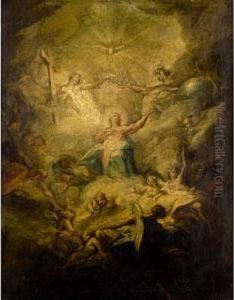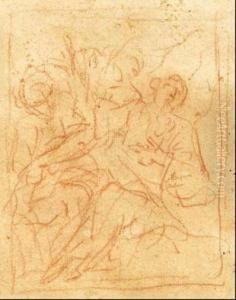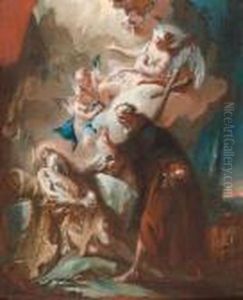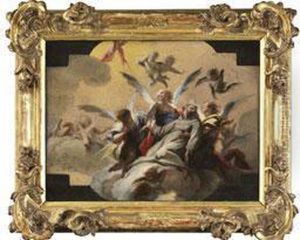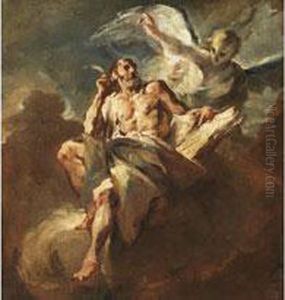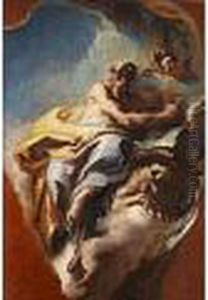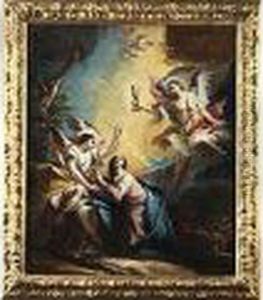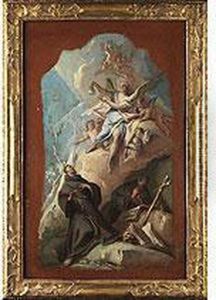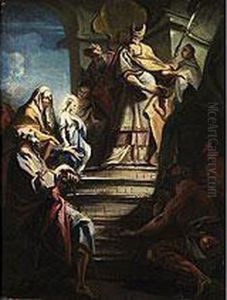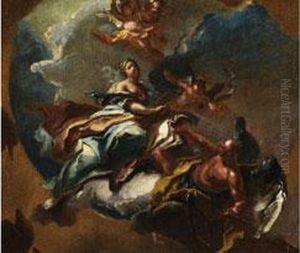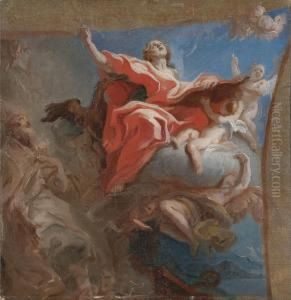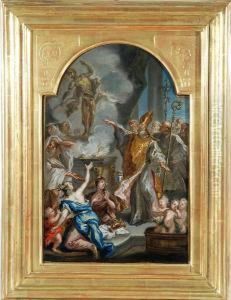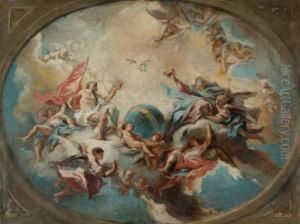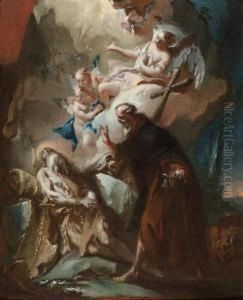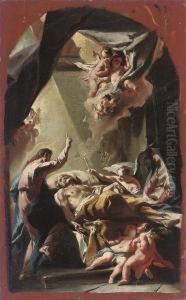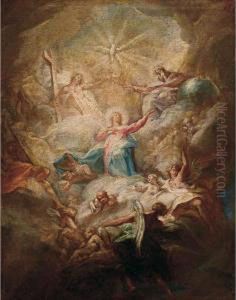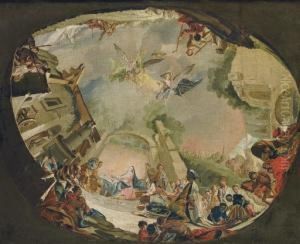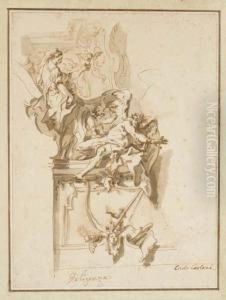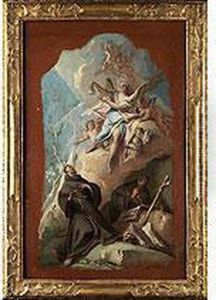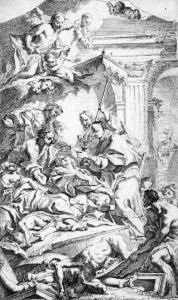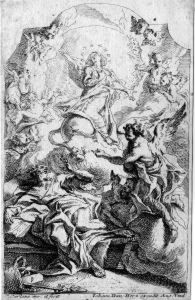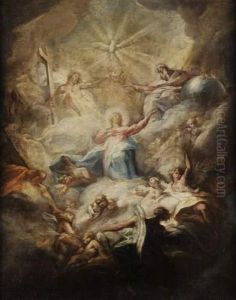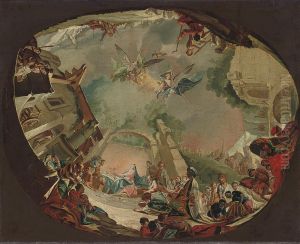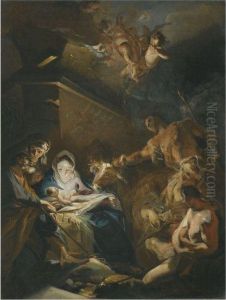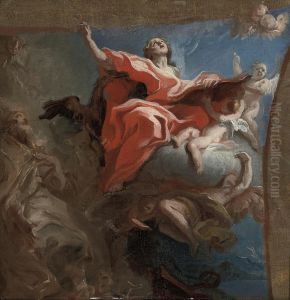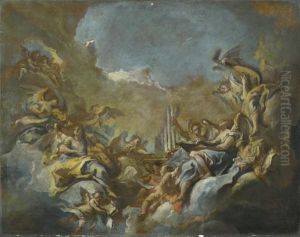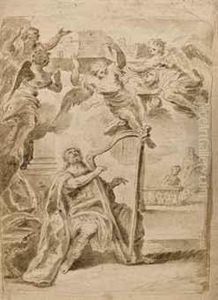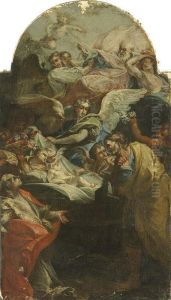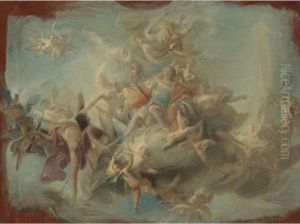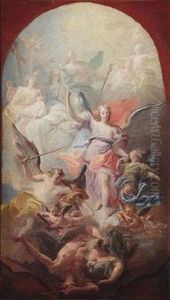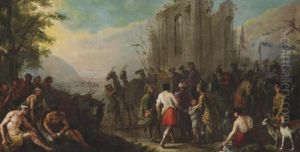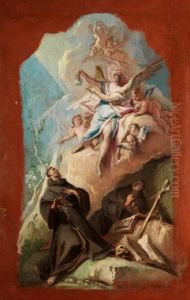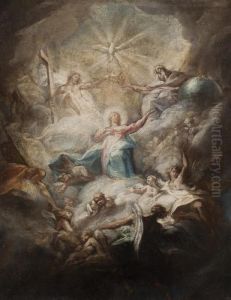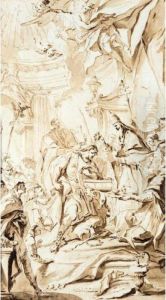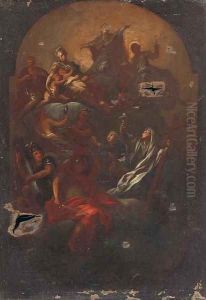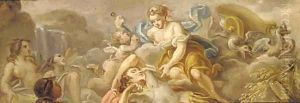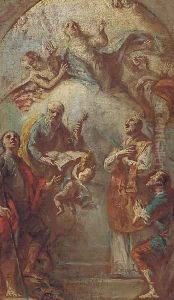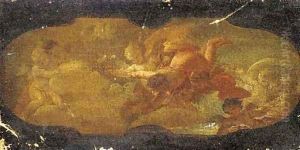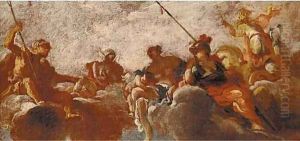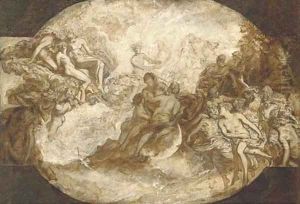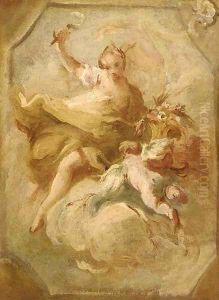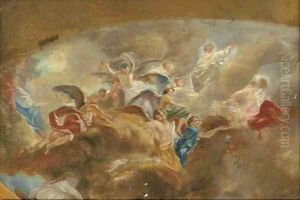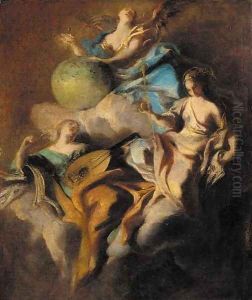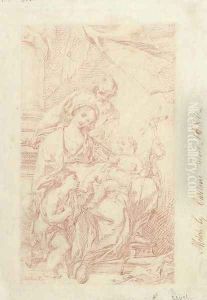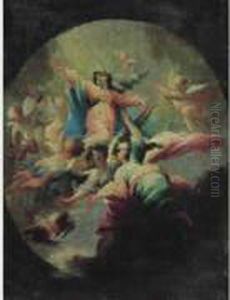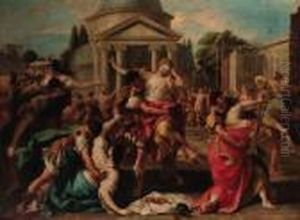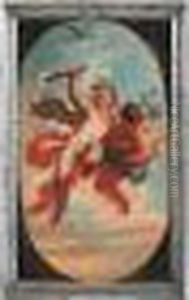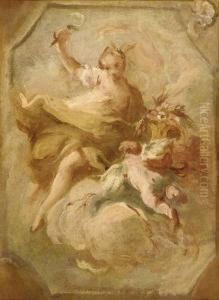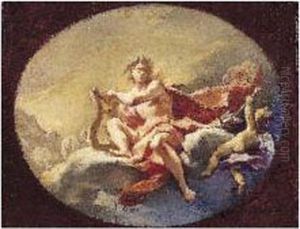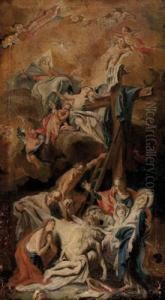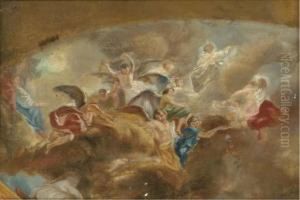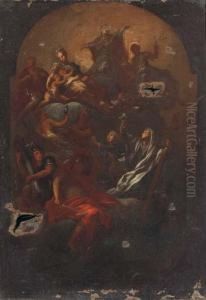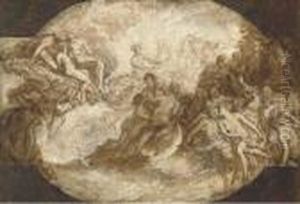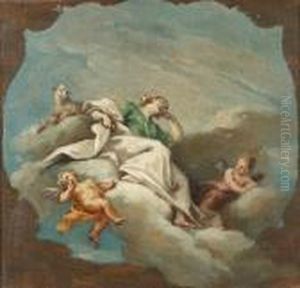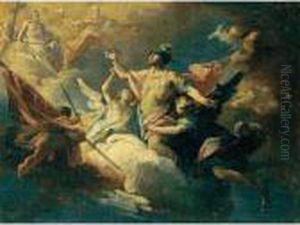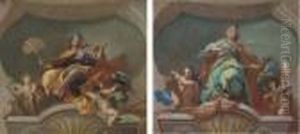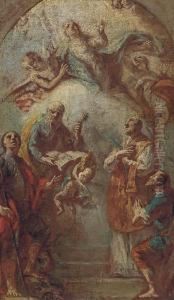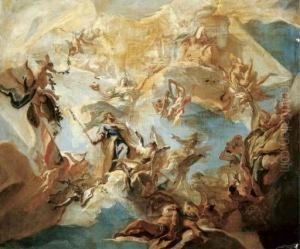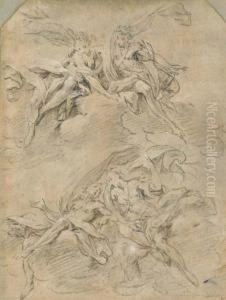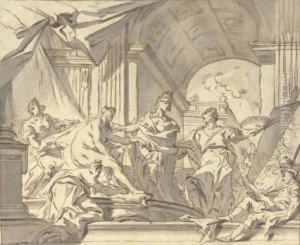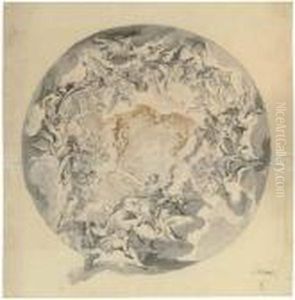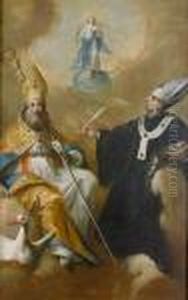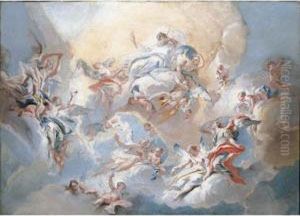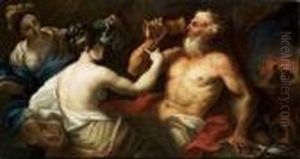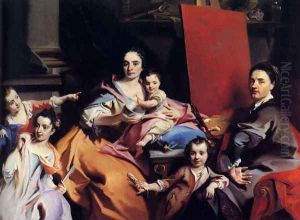Carlo Innocenzo Carloni Paintings
Carlo Innocenzo Carloni was an Italian painter of the late Baroque period, born in 1686 in Scaria, a small town in the Duchy of Milan, which is now part of modern-day Italy. He was known primarily for his fresco work and was associated with the Rococo movement that became popular throughout Europe during the 18th century. Carloni's works are characterized by their dynamic compositions, lightness, and elegant figures, often imbued with a sense of movement and theatricality.
Carloni was born into a family of artists, which provided him with an early exposure to the world of art. His father, Giovanni Battista Carloni, was a painter and stuccoist, and it is believed that Carlo received his initial training from him. He later traveled extensively throughout Italy, where he was influenced by the works of Tiepolo and other Venetian masters.
In the early part of his career, Carloni worked in Lombardy but soon expanded his reach to other regions of Italy and beyond. He was active in various cities, including Venice, where his work was highly appreciated. One of his significant projects was the decoration of the Villa Cordellina in Montecchio Maggiore, which showcased his mastery in creating grand fresco cycles.
Carloni's reputation grew, and he received commissions from both secular and religious patrons. His frescoes adorned palaces, churches, and public buildings, illustrating his versatility and his ability to cater to the tastes of the time. In addition to frescoes, Carloni also painted altarpieces and canvases, although these are less well-known compared to his large-scale mural works.
As an artist, Carloni was part of the spread of the Rococo style throughout Central Europe. He worked in the Venetian territories and then moved to Germany and Austria, where he contributed to the Rococo interiors of various residences and ecclesiastical buildings. His style was particularly influential in the decoration of numerous palaces and churches in South Germany and Austria.
Carloni's work was characterized by a light palette, graceful figures, and a use of perspective that gave his frescoes a sense of depth and grandeur. His compositions often included playful cherubs, classical deities, and allegorical figures, all set within elaborate architectural settings. Despite the apparent ease and decorative nature of his style, Carloni's technique showed a sophisticated understanding of form and space.
Carlo Innocenzo Carloni passed away in 1775, leaving behind a legacy as one of the distinguished fresco painters of his time. His work continued to be admired for its artistic quality and contribution to the Rococo style, which embodied the exuberance and sophistication of the 18th-century European art scene.
